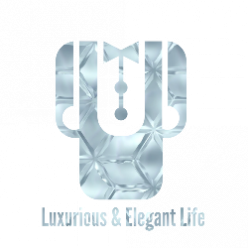In order to ensure we’re at the same place, let’s begin with an explanation. It is a drink that’s produced using very warm or hot water, as well as coffee beans that have already been roasted and ground.
The coffee beans are harvested from coffee plants, which are members of the botanical species Coffea. They are found in its fruit, which is referred to as cherries; it takes about a year for the cherry to mature and then ripen, so its bean is able to be picked.
The plants (which are in reality coffee trees, trimmed to a smaller size) require moderate temperatures, ample shade, and plenty of rainfall, but if you get a coffee subscription you won’t have to think about that. They are only viable in temperate areas of the globe that lie between the Tropic of Cancer and the Tropic of Capricorn. It’s in the Western Hemisphere, that’s between Central Mexico in the north and the Amazon rainforest in the South. The region is referred to as “the beans belt” also called the coffee belt.
Coffee is slightly acidic and somewhat bitter. It’s widely known to be a health-enhancing drink, it’s a mild stimulant due to the caffeine content. it’s the second most-loved beverage around the globe (right ahead of tea and not counting water).
We’ll be looking at those features in more detail after a look at the history of coffee. These are the two most frequently-reported stories about the discovery of coffee.

Ethiopia
The most intriguing story revolves around goat herders from the Ethiopian region known as Kaffa. (Hmm…Kaffa? Coffee? This is already cool.) Supposedly his goats unearthed the coffee plant. He tried chewing the beans and was amazed at the stimulant effects, so they were brought to a nearby monastery.
The monks, who were awed by the experience, threw the beans into the fire in order to rid them of them but were struck by the scent of coffee beans after they were roasted. They rescued them and tossed them into hot water to preserve the beans. Eureka! Coffee!
It’s believed that Ethiopians used to chew coffee beans for centuries before they started to use coffee. It’s believed that they’d grind the beans and then mix the coffee with animal fats or ghee, before taking the mixture during long journeys to be used to get energy and to stimulate.
In the early 1100s, some Ethiopian tribes mixed coffee with porridge, and eventually, they started making wine from the beans – or boiling the beans to make coffee. The story may not be as thrilling as the goat herder’s tale however, it’s more plausible.
Yemen
The story of the origins of Yemen is also pretty cool. An ordained priest (who was also a doctor) was exiled to a Yemeni desert cave and was on the edge of dying from starvation. He may have found the coffee plant, or, in a more modern version, the bird gave him one of the branches from a tree.
In the end, he found the cherries too bitter to be eaten raw, he threw the cherries into a flame to make them cook, but that resulted in them becoming too hard to chew. He then boiled them and you can guess the details of his story. the exile ended. He brought coffee beans back home and the family lived happily ever after. In fact, the priest was declared a saint and an abbey was constructed on his behalf.
Wonderful story. Let’s see what we know for certain, though. Coffee beans were shipped to Ethiopia and then to Yemen around the time of the 15th century, where Sufi monks took them to stay awake during their prayers. It was the Yemeni cities of Mocha (hmmm…mocha! Interesting!) It also became a central distribution center for the coveted Mocha beans grown in the mountains of this region. They were then shipped to Europe and other ports beginning in the 17th century.
We know for a fact that centuries ago, people were drinking coffee in the Arabian Peninsula and in the Middle East.
